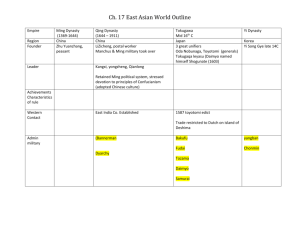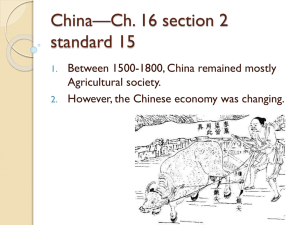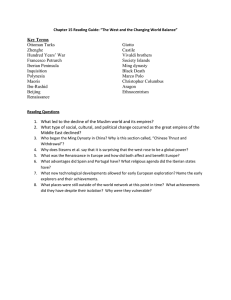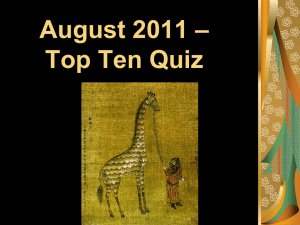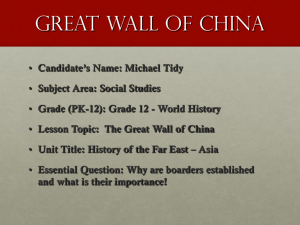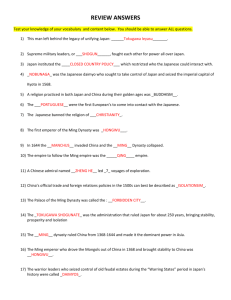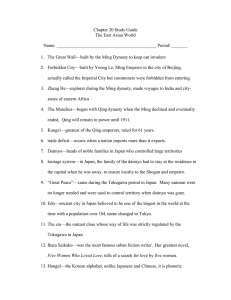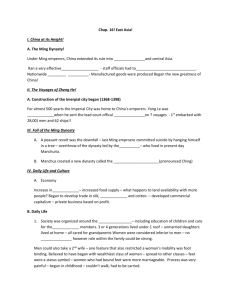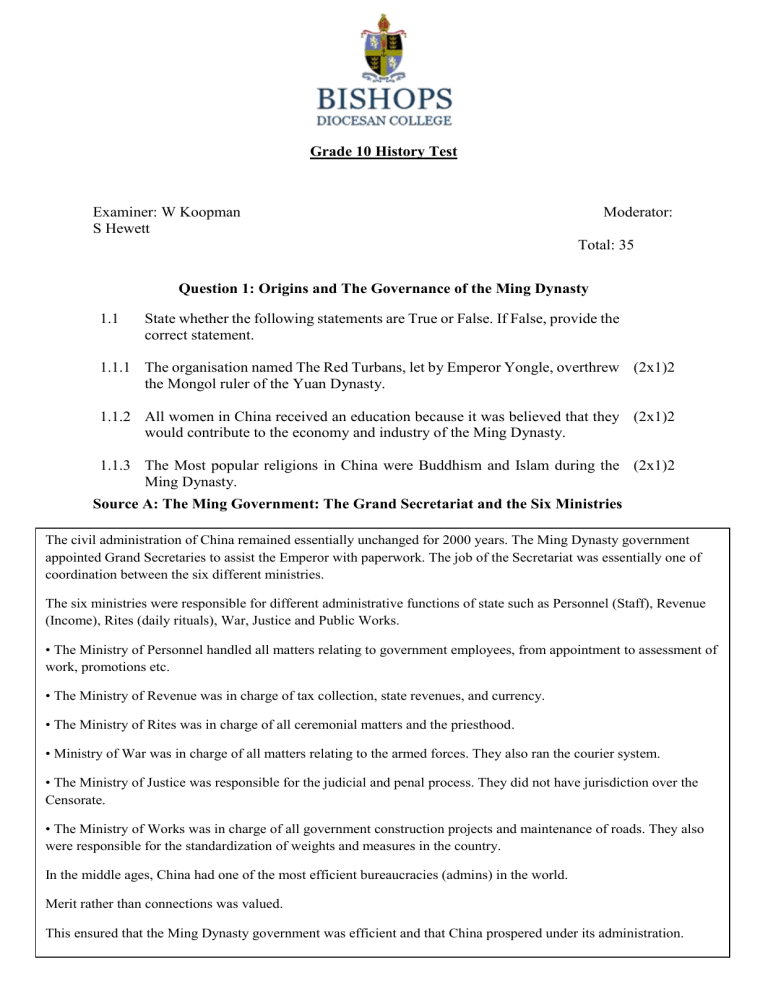
Grade 10 History Test Examiner: W Koopman S Hewett Moderator: Total: 35 Question 1: Origins and The Governance of the Ming Dynasty 1.1 State whether the following statements are True or False. If False, provide the correct statement. 1.1.1 The organisation named The Red Turbans, let by Emperor Yongle, overthrew (2x1)2 the Mongol ruler of the Yuan Dynasty. 1.1.2 All women in China received an education because it was believed that they (2x1)2 would contribute to the economy and industry of the Ming Dynasty. 1.1.3 The Most popular religions in China were Buddhism and Islam during the (2x1)2 Ming Dynasty. Source A: The Ming Government: The Grand Secretariat and the Six Ministries The civil administration of China remained essentially unchanged for 2000 years. The Ming Dynasty government appointed Grand Secretaries to assist the Emperor with paperwork. The job of the Secretariat was essentially one of coordination between the six different ministries. The six ministries were responsible for different administrative functions of state such as Personnel (Staff), Revenue (Income), Rites (daily rituals), War, Justice and Public Works. • The Ministry of Personnel handled all matters relating to government employees, from appointment to assessment of work, promotions etc. • The Ministry of Revenue was in charge of tax collection, state revenues, and currency. • The Ministry of Rites was in charge of all ceremonial matters and the priesthood. • Ministry of War was in charge of all matters relating to the armed forces. They also ran the courier system. • The Ministry of Justice was responsible for the judicial and penal process. They did not have jurisdiction over the Censorate. • The Ministry of Works was in charge of all government construction projects and maintenance of roads. They also were responsible for the standardization of weights and measures in the country. In the middle ages, China had one of the most efficient bureaucracies (admins) in the world. Merit rather than connections was valued. This ensured that the Ming Dynasty government was efficient and that China prospered under its administration. 1.2.1 Define the term “Grand Secretaries” and quote ONE function thereof. (2x2)4 1.2.2 With reference to ONE quote, explain the importance of one individual trait that “ensured that the Ming Dynasty government was efficient, and that China prospered under its administration”. (2x2)4 1.2.3 With reference to the source, discuss to what extent the structure of government enabled the Ming Dynasty to be ‘enlightened’ (advanced and outward looking) that enabled cultural development to occur in China at the time. The paragraph must be 6-7 lines in length. (6) L1 0-2 2 3 Candidates extract information and write up a paragraph to answer the question – elementary. Basic Excellent 3-4 5-6 [20] Question 2 Source Based Question Source B: Ming trade and travel. Zheng He’s travels. Accessed: 31/01/2022. https://www.britannica.com/summary/Zheng-He-Timeline 2.1.1 With reference to TWO visual clues in Source B, describe the extent of the (2x2)4 Ming Dynasties travel and trade endeavours. 2.1.2 Explain how scientific development enabled Chinese ships to trade across (2x2)4 such a vast area of the globe. You must refer to at least TWO specific innovations 2.1.3 Based on your own knowledge, what was the main commodity that the (1) Chinese traded abroad? 2.2 With reference to Sources A and B, and your own knowledge. Write a (6) paragraph of about SIX lines (about 60 words) in which you explain why these sources would be useful for a historian studying the reasons for the success of the Ming Dynasty. Level 1 Level 2 Level 3 Uses evidence in an elementary manner, e.g. shows no or little 0-2 understanding of the usefulness of all the sources for a historian studying the reasons for the success of the Ming Dynasty Uses evidence partially to report on topic or cannot report on topic 3-4 Evidence is mostly relevant and relates to a great extent to the topic, e.g. shows an understanding of the usefulness of all the sources for a historian studying the success of the Ming Dynasty. Uses evidence in a very basic manner 5-6 Uses relevant evidence, e.g. demonstrates a thorough understanding of the usefulness of all the sources for a historian studying the success of the Ming Dynasty. Evidence relates well to the topic Uses evidence very effectively in an organised paragraph that shows an understanding of the topic [15]
